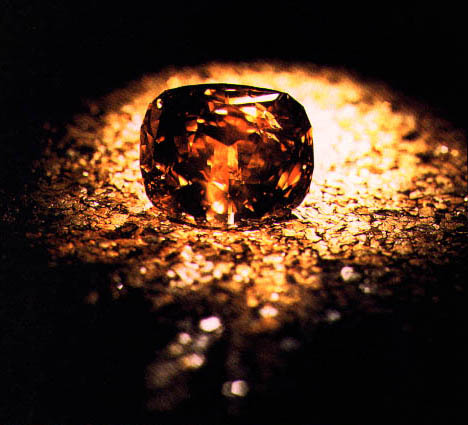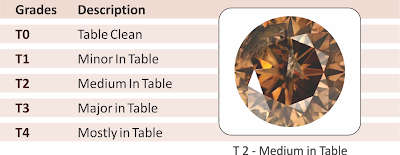The Golden Jubilee is currently the largest faceted diamond in the world. Since 1908, also known as the Great Star of Africa, had held the title, which changed following the 1985 discovery of a large brown diamond of 755.5 carats (151 g) in the prolific blue ground of the Premier mine in South Africa; the diamond would later be cut to a weight of 545.67 carats (109.13 g).
The Premier mine was also the origin of the Cullinan diamonds in 1905, as well as other notables such as the Taylor-Burton in 1966 and the Centenary in 1986.The "Unnamed Brown", as the Golden Jubilee was first known, was considered something of an ugly duckling by most. It was given to Gabriel Tolkowsky by De Beers for the purpose of testing special tools and cutting methods which had been developed for intended use on the flawless D-colour ("colourless") Centenary. These tools and methods had never been tested before, and the "Unnamed Brown" seemed the perfect guinea pig; it would be of no great loss should something go amiss.
To the surprise of all concerned, what resulted was a yellow-brown diamond in a fire rose cushion cut, outweighing Cullinan I by 15.37 carats (3.07 g). The stone remained largely unknown to the outside world, as the Golden Jubilee's sister, the Centenary, had already been selected and promoted to herald De Beer's centennial celebrations in 1988.
The unnamed diamond had earlier been brought to Thailand by the Thai Diamond Manufacturers Association to be exhibited in the Thai Board of Investment Exhibition in Laem Chabang. There was a mile-long queue to see the diamond, which outshone all other exhibits.
While the current whereabouts of the Centenary are unknown, the Golden Jubilee is known to have been purchased from De Beers by a group led by Henry Ho of Thailand in 1995. The diamond was brought to Pope John Paul II in the Vatican to receive the papal blessing. It was also blessed by the Supreme Buddhist Patriarch and the Supreme Imam in Thailand. The Golden Jubilee Diamond (Thai: เพชรกาญจนาภิเษก) was named by King Bhumibol Adulyadej and given to him in honour of his 50th coronation anniversary. It was initially planned to mount the Golden Jubilee in the royal scepter. A subsequent plan was to have it mounted in a royal seal.
The Golden Jubilee Diamond has been exhibited at Henry Ho's 59-story Jewelry Trade Center in Bangkok, the Central Department Store in Lad Prao (Bangkok) Thailand, and internationally in Basel (Switzerland), Borsheims in Omaha, USA (owned by Warren Buffett's Berkshire Hathaway Inc.), and Gleims Jewelers in Palo Alto, USA. It is now located in the Royal Thai Palace as part of the crown jewels.
 |
| http://www.browndiamonds.in/ |





























